Building a Tech Stack that Works for You - PODCAST TRANSCRIPT
June 16, 2025 at 4:00 p.m.Editor's note: The following is the transcript of a live interview with a panel of contractors and tech experts. You can read the interview below, listen to the podcast or watch the recording.
Intro: Good morning. My name is Heidi Ellsworth and this is Coffee Conversations from the Coffee Shops. We have quite the day for you today. I have to tell you, this is going to be amazing. We're going to be talking about tech stacks and how can contractors build tech stacks that can really make their business grow and go to the next level. We have brought in an amazing panel of experts to talk to us about this, so let's get going.
But of course, we always have some housekeeping. So I want to say this is being recorded and will be available within 24 to 48 hours on Roofers Coffee Shop. So please share it, get it out there to your company, to other roofing professionals and friends and family. It's that good and great stuff to share for continuing education on building tech stacks, building your technology within your company.
Also, the chat is open, so please let us know where you're from. I see Doc just came in from Baton Rouge. Thank you so much. We're excited to have you. Please let us know who you are, where you're at, what kind of business you have. And throughout the coffee conversations, this is a conversation. So questions, comments, thoughts, you name it, put it in the chat and I'll be reading them off as we go along.
And of course, I have to say a huge thank you to Owens Corning, who's one of our favorite folks out there. I have to tell you, I've got some folks on this panel who I just love spending time with and doing things and they come up with the best ideas. Owens Corning, thank you so much for sponsoring this and being a part of really making contractors and roofing companies better, more professional and taking them to the next level.
So let's get going with some introductions. First of all, please welcome and I'm so happy to have Phil Pratt here. Phil, welcome to Coffee Conversations.
Phil Prat: Thanks Heidi. I appreciate you having me on.
Heidi J Ellsworth: If you could please introduce yourself and tell us about your company.
Phil Prat: Yeah, sure. So I've been in the industry for a while now. Started out as a contractor. Got out and got into the tech side for about 10 years. Worked closely with Jon and Dave. We've been good friends for a while now. And in mid-2021, went over to a global drone company. We were building out technology for rooftop assessments. And in 2023, one of my customers had reached out to me with an idea of franchising his Veterans roofing company. And I really thought that it was a great mission, thought it was something that would kind of extend what I had already been doing with the drones and being able to utilize the technology for disabled veterans.
But he wanted to go in and build out a franchise that was veteran exclusive and would give folks an opportunity when they were transitioning out of the military to have more opportunities to build generational wealth. But again, I really like the mission so I came on. I'm now currently COO for a company called Battalion Brands and our first franchise that we are offering is V.C. Veterans Contracting. So it is very tech heavy and we need that. We'll get into that in a little bit on why we utilize so much technology, but I'm excited to be here, Heidi. Appreciate it. Looking forward to the conversation.
Heidi J Ellsworth: Phil, it's so fun to watch. You and I were together on RT3 when you were with Zeitview and now to see this really unique structure and initiative that you're doing with Veterans and Battalion. That is just so cool. Thank you so much for being here today. And as always, Dave Banas, who we've been on many coffee chats, many coffee things before. Dave, welcome back and welcome to Coffee Conversations.
Dave Banas: Thank you, Heidi. Thanks for having me back. Great to see you. Great to see Phil and Jon. Dave Banas, Digital Contractor Manager here at Owens Corning. I've been with Owens Corning for just over six years now. My role here is to evaluate business solutions for our roofing contractors and to help educate them on those solutions for their business to improve their business and also to give a great homeowner experience. So those are what we hope to achieve here.
Heidi J Ellsworth: I love it. I love it. Well, Dave, I'm excited. You always come with great stuff on the technology front, which is one of my favorite topics. So thank you and welcome.
And then I have to tell you, I always joke and say, Jon and I grew up together in the roofing industry.
Jon Gardner: Yes, we did.
Heidi J Ellsworth: We did. So Jon Gardner, thank you so much for being here today. You always bring so much energy and a wealth of knowledge. Please introduce yourself and tell us a little bit about what you do with Owens Corning.
Jon Gardner: For sure, Heidi. And before I get a little bit about myself, I always have to say that we did grow up together.
Heidi J Ellsworth: We did.
Jon Gardner: Roofers Coffee Shop. I grew up with Roofers Coffee Shop too. And what I'm getting at here is you've been such an amazing influence and a connector in the industry. You've grown so much, but you've always stayed very consistent in what you want to achieve, which is make the industry better and provide resources that help people do that. And that organic learning, plus all the expertise that you bring. So to you and the entire team, Roofers Coffee Shop. And there's so many different shops. There's not just Roofer's Coffee Shop anymore. There's many more. Thank you, thank you, thank you. You do such great stuff.
Heidi J Ellsworth: Aw, thank you, Jon.
Jon Gardner: Yeah. And about me? You're right, I think I was hatched into the roofing industry years ago and I never left because it is such an amazing industry. And I think one of the pieces that makes it most amazing for me is we get to have the opportunity to sit together and next to amazing companies like Veterans that were with Phil to watch amazing small companies, medium-sized companies, take on some of the biggest challenges and be so successful in taking care of homes, making sure that people across the country are taken care of. So to all the roofing contractors out there, we admire you and thank you for all the work that you do and we love being your partner.
And to that extent today, Marketing Leader here at Owens Corning, I head up our strategic partnerships. And that has a lot to do with the meat and potatoes that's inside of our program. And I also head up our learning and development platform. And that also has a lot to do with helping contractors that are part of the Owens Corning program get better. And that's what we're all about here at Owens Corning, is we want to be the best partner we can to make roofing contractors more efficient and be the best that they can be. So yeah, a little bit about me here.
Heidi J Ellsworth: I love it.
Jon Gardner: And again, thanks for the opportunity.
Heidi J Ellsworth: You do bring so much to the industry and with so many contractors, you're right, it is just what Owens Corning is doing. That's what we want to talk about today. Not just what about Owens Corning is doing, which is very impressive, but we want to talk about how can contractors build their tech stacks? How can you really figure out which software integrates together, works together to see the largest success?
So I want to remind everybody the chat is open. I see Tammy Hall just came in. Welcome, Tammy, always love having you. Please share where you're from, who you are, your business and also ask questions or make comments as we go through. So let's get started.
Jon, I want to start with the tech stack, right?
Jon Gardner: Sure.
Heidi J Ellsworth: And this is an example of a tech stack that Owens Corning has put together. But can you just kind of start us out by what is a tech stack? I mean, let's just start at the very beginning for contractors who are maybe like, "They keep saying tech stack, but I have no idea what they're talking about?"
Jon Gardner: Right. And it's a great question. So we'll get in a little bit more about what we're looking at here. But to answer your question, let's try to simplify the answer here. And that is a tech stack is simply a digital toolkit for roofing businesses. And that toolkit is a combination of software. When you think about software that is embedded into this technology toolkit, we're thinking about CRMs, estimating apps, project management apps, field tools, accounting systems. They're all working together so your business is running more efficiently.
So speaking of efficiency, what's one of the number one outcomes of a solid tech stack that's fully integrated? We'll talk about integration. Is it improves efficiency and accuracy. So for those of us that are out there that are thinking about technology or working their way into it, no more juggling spreadsheets, paper forms.Phil, you remember those days back before the industry at large is really aiming towards the technology side.
And then second, Heidi, is what runs businesses, what drives businesses is the ability to look at data for what it is and be able to make really good decisions. So part of the other piece that a tech stack delivers is it centralizes all the data. So in things like client history and job details and field notes are all in one place. So you're reducing errors, you're reducing those opportunities to make mistakes and it's improving visibility for the entire organization to be able to go down the path, which is we want to make sure the job is perfect and we want to make sure that that homeowner is well taken care of and then they represent the happy homeowners that we want out there.
And then third piece is what most businesses are aiming to do. They have plans for the future, but all those plans really is about scaling the business and scaling to do whatever that business wants to do, hand it off to family or to eventually sell it or to stay with it. The software adapts. And the great part about a tech stack is it adapts as you grow. So there is no one tech stack. And you're looking at one here we'll talk about, but it's important as an industry with high volume and so many different customers that you have to have technology that's going to scale with you because it's not going to remain the same. And we can only imagine that today technology is important. 10 years from now, technology will have a whole different meaning in sized businesses, which we can only imagine. But it starts with a framework around the technology.
And what we're looking at here, Heidi is something that is obviously, Dave, you're very familiar with this, Phil, you are too. And back in 2023, Heidi, Owens Corning dove deep inside just the what does technology look like in the roofing industry? Who are the adapters that are coming in? Who are these first leaders within the technology space that are coming into the roofing industry to help us shape better businesses, to what we were just talking about? So Owens Corning, Dave, myself and others in the organization, really took a deep dive to do two things. One is fully evaluate the technologies that are out in the market and not just kind of look at it and ask questions, but bring it in house and actually do some real world integrations and see how they perform against different types of contractors that might be utilizing it. And number two is establish partnerships that enable us to develop a working tech stack that any contractor, particularly in this particular image, we're looking at a retail tech stack.
So that retail tech stack really exemplifies what we just talked about. From beginning to end, what are the technologies that are going to boost your business and help you improve the efficiency, centralize all your data and scale as you grow? That's what you're looking at here. You're looking at best-in-class technologies of their own, but fully integrated so that they can be the tech stack that we just talked about, the simple definition of a tech stack. And we're so proud of it, we're proud of our partnerships, we're proud to be able to work with our contractors to help them solve some of these challenges, whether they're small, medium or large. So each of us here at Owens Corning have a piece of this and we fully recognize that for us to be the best with our contractors, that we have to get into everything about their business. And technology for sure is one of those places.
So that's a little bit from our side, how we see it and what we're doing to help shape the industry and make sure our contractors are right there in first place, if you'll put it that way. Right? [inaudible 00:13:19].
Heidi J Ellsworth: Yeah. And I think, Jon, you bring up such a great point. And one of the things I love and we want to show this as an example of a tech stack is really, as a contractor, looking at everything you do throughout the life cycle of a customer, right? Every step, whether leads to the communication, to the measurements, inspection, presentations, quote, counting, reviews and how you are automating each step, picking the best in class customer to be able to do that and then making sure they all integrate and talk to each other, which is so critical.
Phil, can you talk a little bit about your tech stack? What are you using and how have you put that together for you and for all these other businesses that you're bringing in?
Phil Prat: Yeah, I'm not going to go into details on who we're using, but I can go into detail on why we're using them. With franchise ownership, we've got to look at what's going to help our first year guys close jobs and get paid faster. We don't want to overwhelm them, we don't want to throw everything out there. That definitely ends up clogging up or bottlenecking their workflow just because they end up working too much on the tech and not enough on their business. So we're looking for stuff that will reduce complexity and it levels the playing field for these guys when they're first getting in. So we'll start off with the CRM.
So CRM need something that is pretty simple and it integrates with as many of the tools as we're going to use as possible. We don't like going in and cherry-picking a bunch of different technologies that don't talk to each other because it increases that learning curve. So we want something that's simple, functional and can get our guys to track jobs and get paid. So with our tech stacks, our year one may not look the same as our year three. We will add in some of our marketing tools, some of our other vendor partners that help get leads and help grow their SEO, stuff like that. But in the beginning, we want to keep the core stuff pretty tight, something that's easy to get out there, track jobs, collect money. So that's our focus.
Heidi J Ellsworth: You know what? That's the thing. I think everybody has to really look at where their... I've got rainbows coming in, so thank you, everybody. Really looking at what fits their business model. And I loved one of the things, Jon, you said is best in class. So Dave, how do you determine that? When you're looking at these software tools, what should contractors consider for their business? How do they determine best in class?
Dave Banas: Yeah, so just building off of what Phil said, looking at the core. So when you're looking at, for your business, there's core technology to look at, is your CRM, your accounting software is another one of the core and those two should talk to each other. And just looking at your business processes. The CRM that you're evaluating, does it support your processes? Because that's really what technology should do. You're not just using technology for technology's sake, you're using it to support your processes. So I look at those for evaluation.
Also evaluating technology, you want to look at what does the onboarding look like? Is it easy to set up? Is it hard to set up? And Phil mentioned, hey, starting out with something simple to get you going. You want to take that into consideration. Support if you need it from that particular company or whatever technology you're evaluating. And that's some of that criteria that I take into account.
Heidi J Ellsworth: One of the things I think as we think about our audience out there right now is most people aren't just starting at the beginning, right? They don't have a clean slate where they can say, "Okay, I should start first with a CRM." But Phil, as you're looking at that and I love to get down to the brass tacks to help everyone walk away from this a little bit more, but what are some of the first things that you should look at in your tech stack? Where do you start? What's the most important? I know in the tech stack we showed earlier, Jon, you have the CRM right in the middle of everything. So Phil, start us out there and then let's just talk about that, where you start and the importance of that CRM.
Phil Prat: Going back to the one thing Dave said, processes. We need to make sure that it's going to match up well with your process. We don't want to get hung up on features. We want function that fits what you're currently trying to do. So with the CRM, just it easily integrates with measurements, something that we can get the estimates out easily with, something to keep track of the jobs. And like Dave said, just the onboarding. It's got to be simple. Can't confuse them. But yeah, is that what you were looking for, Heidi? Sorry.
Heidi J Ellsworth: Yeah. Yeah, no. And Jon, maybe expand on that too, because with you and Dave, you guys did start with a clean slate on how it should look. Where did you start and how did you start building out from that?
Jon Gardner: Well, we reverse engineered it by going out to the market meeting with some of our best in class contractors who were early adopters of technology. And also looking at other contractors within our network who are in the process of it. So through our insights and through the research, we really landed on, number one, the technologies that are most critical to integrate to create a full lifecycle. And when we think about lifecycle, our prism on that or our north star is always the homeowner. And so we actually started from that place, Heidi.
And to your point before the heart and the soul of any tech stack is going to be your CRM. And this is, at its core, Dave mentioned this, the CRM is the most critical piece of it. Think about it from a human body standpoint, your spinal cord is running everything right? It's doing its job to make sure that we can walk and talk and do all the great things you're doing right here. Think about your CRM as the same. So when evaluating your CRM, you need to look at it from fit for purpose, like Phil said. There's a variety of CRMs out there with JobNimbus front and center. They're a great partner of Owens Corning and fit in a majority of businesses and sizes. So that's why we, in many ways, look at JobNimbus as best in class with CRM across all opportunities out there.
But when you look at the other pieces, Heidi, it's really okay, so efficiencies are one thing and having the integration and be able to make sure that the salesperson's connected to the folks in the production and that leadership can have line of sight of all of it. The idea behind a tech stack, at the end of the day, is to create a more efficient and better running business. So I want to throw a couple numbers out there and this is publicly available data, if you will, that we've been able to utilize and research. And so let me just, if you don't mind, Heidi, I'll just share a few of these things.
Heidi J Ellsworth: Oh, I love it. Love numbers.
Jon Gardner: For sure. We all do. And so let's just think about a company that's 5 million, that's a good size, right? It's a $5 million company and they're either mature or stable and they're happy there or they're growing, either way. If you look at a company that's maybe not integrated into technology versus one that is. A company that's integrated technology can see, on average, about a 12% to 15% annual growth in their revenue versus a company that's not integrated with technology, you're looking at single digit growth.
And the other piece about technology too, Heidi, keeping in with this revenue side of it, which think about that, 12% to 15% annual revenue growth. That doesn't mean you have to hire new people to get there. You're putting more efficiencies in place so that your business can run better. But this whole piece about transparency, Heidi is really important. Homeowners are expecting transparency and they're expecting information where they can be educated and make great decisions even if it's midnight. And so this element of transparency can boost conversion rates as much as 20%. And conversion rates could be happening anywhere between your website, all the way down to other resources that you have and channels that you're using to drive lead gen. So a 20% increase in conversion rate is significant.
On the project management side, technology's going to affect that as well. I mean we can look at labor efficiencies when it comes to technology and that can be as much as 20% savings and that equates to about $54,000 to $60,000 per year in labor savings. The whole piece about estimating and speed and volume, that's a big piece too, that we've talked about this. And we see real numbers reporting about a 75% faster take-off in terms of producing those takes-offs, allowing for as much as three times as many estimates per week, Heidi. So these are just some of the numbers.
And when you look at technology and you see the impact that it can have, when you start to put those elements together and you start to compound the effectiveness and the efficiencies of technology, the numbers that I'm sharing with you and the team here, really just they're indicators and that's the return on your investment you're going to get for putting in your technology. So where do you start? I know we're going to talk about that a little bit more, but big picture is you're going to start at the core, make sure that your business is solid with the CRM. But then it's really up to you and working with smart people inside your organization, maybe consulting with others to decide where your biggest pain points are and that'll drive you to your next piece.
So just a few pieces of data here, Heidi, Dave and Phil. These are game-changing numbers and these numbers put us in position for significant growth. We talked about in the very beginning, that's the real purpose of the CRM, scaling with the business, centralizing the data and improving efficiencies. So there's a little bit more for you there, Heidi.
Heidi J Ellsworth: Well and it seems too, as we're talking about the labor shortage and what's going on, the labor shortage is not just in the field, it's also in the office, right?
Jon Gardner: 100%.
Heidi J Ellsworth: We are looking for talent, for sales, for everything. Technology can help fill in some of those spaces, not all of them, but it helps fill in some of those spaces. When we're looking at the number of people, we were just talking about this before we started and the efficiency of the folks you have.
Dave, you've got a big smile on your face, you're kind of nodding. Have you seen that with your contractors, that as they adopt technology, that it is helping? Because I think, okay, I'm just going to go back a while and I'm going to show a little bit of my age, but there was and I don't think this has totally gone away, there are people who are saying, "Well, they'll steal my job," right? They're saying that now today about AI, "It's going to steal my job." Whereas in all honesty, we don't have enough people for the work that needs to be done. And I'm going to jump here, but Phil, how do you see that with everything you're doing and really bringing that technology and the tech stack together to help with that?
Phil Prat: Well, like you said, it reduces the overhead, but it also allows leadership to actually build out referral networks and not have to deal with stacks of paperwork. They can work more on the company and not having to chase down jobs. I've got a great example of, well with V.C. So V.C. for years and years and years and years, they worked off of Google Sheets. I mean, it's great. It's great. It's easy to share. You can have all your team on there, but actually having to build that out to where it's functioning like a CRM is very time-consuming.
But that was their core, where they kept all of their information. And they were not in a storm market. They had not done a lot of storm work. Well, massive storm comes through and they were doing high seven a year. So I mean, they were a solid company, been around since 2011, but just weren't quite ready to take on all of that work at one time. And so the storm hits, how in the world are we keeping track of the phone calls coming in? 300 calls in 24 hours, "Hey, can you get out here?" How are we keeping track of that? And Kyle, the owner, gave me a call and said, "Hey man, I need some help. I know you've got connections in the tech side." Like I said, he was a customer of mine. I said, "You know what? Let's take a look at where you are right now, see what we can plug in."
And we were able to take him just by adding in a CRM and adding, Zeitview was our partner at the time when I was working there and he was one of my customers. But we were able to capture, I want to say it was around 300 inspections in around a week just by being able to tie them in. We were able to start tracking all of the phone calls in the CRM, getting their information, automating the emails to them, setting up the inspections. And they were able to capture around 300 inspections in right around a week. And just by implementing these, we almost doubled his revenue in year one of utilizing a tech stack.
So I mean, that's a good example of just plugging in a couple different things that free you up that help reduce errors and help you stay in contact with your customers.
Heidi J Ellsworth: Sometimes it's that basic. I mean, that's not basic. That takes tons of work. But I know another contractor who we actually talked to a little bit about this, Ken Kelly, had a similar experience, Phil, when they had to put in a whole system just to handle hurricanes and it changed their world technology wise.
So Dave, when you're looking at some of this, I am going to again, go back and show my experience and time in the industry, but there was a time where no one integrated. No one. It's like, "Nope, this is our little world. We're closed. Don't even think about it."
Jon Gardner: Everybody stay away.
Heidi J Ellsworth: Yeah, everybody stay away. And within the last five years, maybe longer, technology companies have really realized, "Hey, we need to integrate. There just can't be just one software." So Dave IPAs or APIs.
Jon Gardner: IPAs too.
Heidi J Ellsworth: IPAs are great at the end of the day. AIPs, whatever, all of this terminology that people are going, "I don't get it." Talk to us a little bit about that. What, as a contractor, should you be looking at for these integrations and how does it work?
Dave Banas: Yeah, I would say when you're evaluating software and that's one of the criteria I look at is the ability to integrate with different tools out there, because as you said, you don't want to have a bunch of different tools that don't communicate with each other. So for me, integration is big. There are a lot of solutions out there that and I'm starting to see it, where they are starting to branch out and they're trying to do a lot of things. But there are some companies out there that do certain things better if that's what you're looking for, a best-in-class experience with a certain process. So if that's something that you want to be able to use in your tech stack, you want to be able to make sure that it integrates. And there's going to be something new that's going to come out in the future too and will that be able to talk to your systems and be able to integrate?
That was one of the things when we put the tech stack together was going through. And if we're looking at a example recipe of a best-in-class where we're looking at a CRM, which is your hub, as Jon mentions, that is going to connect with these other tools to be able to set up your automations, be able to share data back and forth with each other because you don't want to do manual entry. It creates errors, extra time. You want to be as efficient as possible.
So that's one of the criteria when you're talking to companies and you're looking at your short list of, "Hey, here are the tools that I'm currently using. Here are my processes, here are my pain points. Here's something that I've heard about that I maybe want to take a look at and see if it works." The questions is, does it fit in? Is it easy to implement? These are questions you want to ask that vendor too, whenever you talk to them, when you do your demo, it's like, "I'm using these other tools. Does it work with them? How does it work with them? Is it easy to set up? Am I taking two steps forward? Or am I taking a step back?" So those are all great, important conversations to have and exactly how they do it.
Just a word of caution. You'll hear companies say, "Yeah, we integrate with this," but what does that integration mean? So what exactly does that mean? Is it data only going one way? Is it going back and forth? Is it syncing? So whenever you're evaluating and you talk to these companies, you want to find out exactly, you say you integrate, but what do you mean by integration? What are the processes that are happening? What am I able to do?
Heidi J Ellsworth: Yeah and Phil, I mean, chime in on that because I know this is something when you are looking at your softwares and are they... I think about aerial measurements, right? Aerial measurements, how amazing it is to be able to have those just flow in and to be able to use them in a way that people aren't having to re-input numbers and possibly get the numbers wrong as they're going along. So when you're looking at how your different softwares integrate, what are you looking at?
Phil Prat: Well, just like Dave said, it's got to be something that is able to send data both ways seamlessly. Getting the imagery into your CRM is big. You don't want to spend an hour downloading it and then having to upload it back in there. But we want stuff that works quick, easy, seamless and integrates with most, if not all, of what we're utilizing in our day-to-day workflow. Heidi, what was it? A couple of years ago, the biggest problem that we ran into at RT3, we even had an innovation board on this, was there's so much technology out there, but none of it talks to each other. And that was our biggest problem, not having all these tools, it's how do they talk to one another so I can work cleanly in my day-to-day business? So that's what we look for is something that makes our work on a day-to-day basis easier, smoother and whatnot.
Heidi J Ellsworth: Yeah. Well, Jon, we did a CoffeeCast together, you and Dave and I and we talked to many of your partners who are working together to integrate. And I find this fascinating, going from we are totally an island to where we are today, which is really the affinity partners, the coalitions, everything you see within... I hope that's the right word. I mean in all the positive ways. Of technology companies. But Jon, you really had some great conversations, you and Dave, with some of these companies saying this has to be internal. And I'd love for you to talk about that in conjunction with what kind of time savings and streaming workflows that means for contractors.
Jon Gardner: I mean, if we use that same example that we were talking about before, Heidi, when I was just bringing up the example of $5 million contractor, it's a solid contractor we were talking about. But at the end of the day, integrating the technology and just averaging out what we see as average return on the investment for the technology, you're talking anywhere between 800 to almost a million dollars of yearly gains. That's significant.
So when we think about, in all practicality, what are some of the technologies and to your point with some of our partners that have such immediate impact and they also integrate well with one another, meaning that they play off with one another very well and there is an integration through the CRM? A few examples that I'll give you and one really speaks to transparency. And we have a really, really comprehensive integration and partnership with ROOFLE and there's technologies out there that are driving towards the transparency. So what homeowners are saying with where we're hearing from them and our insights is, "If you give me transparency and you tell me how much this is going to cost and you give me an opportunity to quickly educate myself, I'm going to be aligned with you."
And I can only imagine any one of us or the folks that are on this coffee conversation is we all experience that in our own ways where we just like, ah, I'm just turned off because we're not getting what we want. And so what does ROOFLE do inside the technology stack is embedded inside of your website, which is, to answer your question, there's an integration inside of one of your technologies now. So you now have ROOFLE who's really driving transparency and getting a homeowner to stay on your website. And that's really the purpose of a website, is to keep your homeowner on there and have them make a great decision, which is to stay with you. ROOFLE is all about, I want to provide you transparency and education. So that's pricing, that's color options, that's warranty information. That's how a roof system's built anyway. The expectations of how much it's going to cost per month, what's the total cost going to be?
Can you imagine having that information in front of you at 11:30 at night speaking with your partner or yourself sitting in bed and you're like, "Ah, I got to get this roof done." And in five minutes before you go to sleep, you now have an answer to everything that I just mentioned. And that's because your website is driving the traffic to the right people, which we didn't talk about yet. But inside of your website, you have technology that's built in to keep them there.
And another example of a fantastic technology that's built inside your own selling experience is what's the one lead who's the one customer or one resource that you want to drive more leads? And that's a quirky way of saying, Heidi, that your happy customers are your best opportunity to drive further business.
Heidi J Ellsworth: Yes.
Jon Gardner: I mean, it's just the way it is. But how do you drive an efficiency inside your organization to make sure that every single salesperson, every single estimator, everybody's rallied around making sure that that homeowner has been asked for a referral and is giving the incentive to do so, whatever that incentive might be? And get the referral is a fantastic example of technology that's built inside of your own tech stack that integrates into your CRM that is solving for that very specific thing, which is, sales team, your number one objective is to make sure that the homeowner is going to move forward with a plan. But your number two objective is to make sure you get 1, 2, 3, 4 more referrals off that. We're going to make it easy for you and we're going to provide technology to assist in that. Two great examples of technology built into your stack, one of them is an example that's built deeply into your own website.
And then the final piece to that, Heidi, is well, what about your website? And the website itself, as we all know, they're pretty ones, there's ugly ones. But we all want fast ones. That's what we want. And we want ones that are propelling the consumer to stay on your website and learn. But you also want to be able to meet the right customer on your website, meaning point your website to where that customer is going to be. And that is all based on data. And our partnership with Art Unlimited and the investment Art Unlimited, which is a full-scale agency that we're deeply connected with that handles many of our platinum contractors and preferreds, has built technology into their own business that allows them to make better decisions, meaning their customers can make better decisions. And allowing data to say, "Here's where your optimal customer is based on what you want to achieve. Here's what your customer really likes in terms of being connected with." Some want to be connected via reading something, some want to be connected via a social chain, some want to be connected via direct mail, who knows what it is. But allow technology to make that decision for you and drive to that customer that's going to give you the opportunity to sell the job.
Phil Prat: Jon, who's that? What company is that?
Jon Gardner: Art Unlimited.
Phil Prat: Oh, Art Unlimited.
Jon Gardner: Yeah.
Phil Prat: [inaudible 00:39:49].
Jon Gardner: Great example.
Heidi J Ellsworth: Phil's taking notes.
Jon Gardner: Yeah, yeah, he is. So anyway, Heidi, some quick examples there with just real practical applications to how technology can really deeply impact your business. And I love, referrals are really important to me, but also that transparency element, which is keeping me on the website, which is what I want. So anyway.
Heidi J Ellsworth: Well and I think, Jon, to your point, is so spot on is contractors need to be willing to look at the future too. Because I know ROOFLE, when you talked about ROOFLE, there's a lot of people who are like, "I don't want to show all that on my website," but knowing your customers and knowing where to meet your customers and you and I've had this conversation many times, but I really feel this, Gen Z millennials, they're going to buy different. They want to buy different. And they're teaching their Gen X parents how to buy different. Right.
Jon Gardner: That's right.
Heidi J Ellsworth: So it's not just one generation, the other, but they're learning. So you don't want somebody in your house for two hours doing a pitch. I mean, honestly, I don't. And I want to be able to do it at 11:00 at night, have an idea, trust that company and then for the company to be using that data to actually have some insights into me to make my buying journey easier, I think is phenomenal. Phil, are you seeing that, I mean that same thing, really staying on front of this technology even when it's a little uncomfortable?
Phil Prat: Yeah. And one recommendation that I do want to give, just same thing I just did here. Jon, we work with Owens Corning as one of our partners. What did I just do? I said, "Jon, who was that? Who was the company that you were using?" I want folks to know that, hey, you've got resources out there. Jon talked about when they're vetting vendors to go into their tech stack. How long did you vet my company before we ended up partnering with OC ProSkin? It was like 18 months. So they do the digging on the back.
And you want to go to your sales folks, your ASMs and they know your company and they know the tech tools that they have. So use them as resources, use your sales reps as resources. "Hey, what technology is out there and what do you think is going to fit best in our company? What do you see?" Because I mean, you could spend days going through all the thousands of different technology systems that are out there, but utilize folks like Jon, like your area sales reps. They're going to know what's going to be best for you.
Heidi J Ellsworth: Jon-
Phil Prat: They've already done the vetting. They've done the leg work. So just say, "Hey, this is what I'm looking to do. What do you have-"
Jon Gardner: That's a great starting place, right?
Phil Prat: Yeah.
Heidi J Ellsworth: Well and I think that that's the thing is when your manufacturers and distributors are putting in the resources, something like what Jon and Dave are doing to really do all that research ahead of time and to bring all of that to the contractors, that is invaluable. That is just invaluable because it's a trusted source, someone that you can really work through. And not everybody makes that commitment, to the level that you all do.
Jon Gardner: Yeah. Well, I mean it allows Dave and I to get a little nerdy, right, Dave?
Dave Banas: That's right.
Jon Gardner: We can just get into it and really dig into it.
Dave Banas: Oh, I mean that's one of the great things here is just being able to go in. We have solutions that come to us all the time to take a look at, so we evaluate, they come to us. ASMs, "Here's something they mention to us." We have a conversation with a contractor, find out what they're doing. We take a look at some of the things they're doing. Sometimes they're not even in the roofing industry. They might be in another home improvement industry or something else, but they're using it in a way that could be valuable. So it's something that we'll take a look at and see if it makes sense. And just looking at it and see if it's something that's complimentary, if it's an overlap of another solution. I mean, we have a lot of fun here, Heidi.
Heidi J Ellsworth: Yeah, I know.
Phil Prat: Dave's on it. Dave's on it. Every time we have a conversation, if there's a new technology tool that I'm using, he's like, "Hey, I want to know about it. Can you walk me through that? This might be something that fits." Because there's a lot that's out there, but they do their due diligence
Heidi J Ellsworth: And it is so fun to have like-minded, I mean, that's one of my favorite things about roofing technology, think tank. We all get together, Jon's on the board, we've all been on there and we talk about technologies and where they're going.
But first of all, I want to remind everybody, I know this has been such an active conversation, it's kind of exciting, but I'm not seeing much in the chat because I think you're all listening. So if you have any questions, now's the time, if you have any comments, any thoughts. But I want to talk a little bit about the culture of technology. I think that is something we talk a lot about today with companies. And I saw Melissa was on here. She is an expert on talking about culture, but there's different cultures of safety, cultures of inclusivity. But there's definitely a culture of technology that I think is incredibly important for companies today to get past the fear of adopting new technologies, of adopting, not just the CRM and some of the basic tech stack, but some of these new technologies that are out there, whether that's instant bids or whatever it may be.
Phil, working with your company and then with all your franchises, how do you create that culture of technology so that employees... because let's just face it, a good estimator who just hates technology can stop the whole process. You really have to get the buy-in of your employees into this culture and believing in the use of technology. How is that working? How do you work through that?
Phil Prat: Mine's a little bit different because we're training folks fresh and so, "Hey, this is the process. This is the system." But you're right, it's not always easy to get that adoption. And I know we talked about it before, but the onboarding process is huge. Making sure that your tech partner has a very thorough onboarding and they're not just going to say, "Hey, here it is. It's this much a month. Good luck. Have at it." So when we vet out vendors, we make sure that they've got a very thorough training onboarding to make sure that we're very well versed in their systems. And if we have any issues, we make sure that we've got that POC that we can call at any time to be able to fix any issues that we've got.
Jon Gardner: It's an interesting question and it's labor or talent. When we think about technology's really important, it's one of the big things that our contractors are waving the flag saying, "Hey, we could use some support," which is why we're investing in it. The area that consistently comes up is labor is one piece. Who's actually going to be applying the roof? That's an issue. It's an ongoing issue. But there's a sub-element of labor, a bigger element, which is the talent part of it, which is anybody and everybody who's inside the organization that's actually driving for the success of the business and meeting its goals. And so who are they? They're the marketing people, they're the production people, they're the office folks, they're anybody that's in the organization. But think about the engines that are driving the business. Those are the salespeople. And when you think about retention, even before you get retention, how about just there's a great opportunity for you in the roofing space and sometimes roofing is overlooked and that's just a fact of life.
So I think the industry and folks from outside the industry looking at opportunities are more and more looking at it. National Women in Roofing is a great example of how we're attracting folks that are coming into the business and saying, "I never looked at roofing as a great place to work, but look at me, I'm successful."
So when you think about technology, one of the biggest advantages that it can provide to you is it actually is a opportunity for you to showcase how advanced your company is so you can attract the best of the best. And so the best of the best today, they're younger. So we're all young at heart, but the younger generation is fully adapted into technology and they don't want to go to a place to go to work and go back to old school. They want to embed their whole career and their opportunities inside technology that they're accustomed to, they've been taught about and that they really inspired to be and they bring some passion or whatever that might be. So when you think about technology and you look at, for example, salespeople, give them the technology and really showcase that technology, invest in the technology and offer that to folks that are outside this industry to say, "You can have an amazing experience. You can use technology. You can be incredibly efficient, you can make a ton of money.
So summarizing all that is it's beyond the dollars and cents here. Technology is also a great way to capture the attention of great people that may not even look at the roofing industry, but retain them. And technology also allows people inside the organization to understand other elements of the business because the technology is working throughout. So people get an opportunity to move across your organization and allow technology to help them advance their careers as they're progressing through it. So lots of other things there. These other elements that we haven't talked about yet, but I think are so critical. Talent, labor, talent, talent, talent, talent. How do we get them here? We give them reasons to come into the roofing industry, great career, amazing technology that's going to allow you to continue to grow and be who you are.
Heidi J Ellsworth: Every coffee conversation, everything we do, I'm always looking for the nuggets. What's that nugget? And I think you just nailed it. Technology is a recruitment and retention tool.
Jon Gardner: Sure is.
Heidi J Ellsworth: We don't think about that all the time, but if you are looking to recruit talent like you're saying and retain them, you have to be on the forefront of technology.
Jon Gardner: We do.
Heidi J Ellsworth: Yeah, that's a great one. Great one, Jon.
Jon Gardner: It's great because again, I mentioned National Women in Roofing, but there's so many examples there of women that had no aspiration to get into roofing but said, "Hey, look, this might be a great place." And I've had many conversations where technologies, they're bringing in some of the greatest thoughts, thought leadership, I'd never thought about roofing, but now that I'm in it, I'm going to make this the best experience for me and for all the other women that are coming in here.
Phil Prat: I would like to add to that, Jon, so talking about different personas that you're attracting. For us, part of our mission and part of Kyle's mission, one of the reasons why he started was he got a TikTok video from one of his teammates. It showed everybody that passed away in the battles that they were in. So Ramadi and Fallujah and then part of it was everybody that they had lost since. And that list was about three times as long as the folks that they actually lost in war. So from suicide, overdose and whatnot. And that's really what drove him to say, "Hey, I've got to keep names off that list."
I was in the drone industry forever developing that technology. We were able to use what we built there to give purpose to these folks that I may be sitting on the couch. I can't go out and climb on a roof. I'm trying to figure out what my next move is. Well, now I've got an opportunity to get out and utilize this technology. I can be an estimator, I can be an inspector. I can do this stuff. So there's so many tools out there and for us, it helps get those guys off the couch. It gives these guys purpose outside of, "I don't even know what I'm going to do." And so it's been big for us to help pull some of these guys back in. And it's for the [inaudible 00:52:25] industry.
Heidi J Ellsworth: That is inspirational.
Jon Gardner: Yeah, it is. And a real example of that is not an employee of veterans, but a similar experience, Phil. I had an opportunity to connect with someone who jumped into the roofing industry after being deeply embedded into the military. This gentleman served our country with distinction and got into some hairy things. But he's out of the military now and he found his way into just finding a job because it's not as easy to get a job once you're out in the military. It's a whole different conversation. But he did eventually become an employee of a roofing company, a preferred contractor of ours. And his capabilities from outside the industry came from the military. He learned how to be a great leader. He learned how to utilize technology. He learned all of these skill sets that he was able to bring into the business.
So there's a great example of right purpose, passion about really doing something that he could invest in other things, in this case, he was in the military. But the point of this is it was a million-dollar company and this person went in with the passion and the purpose of building a better business on behalf of the owner. And today that's a $10 million business in two years.
Phil Prat: Oh, wow.
Jon Gardner: So it's a combination effect here of bringing in the right people, we just talked about this, but making sure that they have the resources to stay there and be as productive and feel like they have purpose. And 1 million to 10 million, a very profitable business. I couldn't tell you. It's hard to express just how grateful this person was and how proud they are. And the big chunk there with what we're talking about here, Heidi, technology had a huge piece of that. But I'm also layering in that the person wouldn't have gone there if he didn't see an opportunity to be who he was, which was, I'm totally invested in technology and I want to apply that to this business that I know I can be effective. So there's a real life example right there.
Heidi J Ellsworth: Yeah. I love it.
Jon Gardner: And it happens all day long.
Heidi J Ellsworth: Yeah, it is. It's so inspiring as you look through that. Okay, we have a question that I want to get out there, Phil. I'm going to put this towards you. And it says, "How do you evaluate tech stack for new franchises? What parameters are you looking at?"
Phil Prat: Yeah, so we're looking at cost and ease of onboarding. So first year, look, I mean, you're not going to have a lot of money coming in, so we want to use something that can scale quickly when we need it. We can easily add seats, but it's not going to bury us in cost. So we look at just core function of capturing the customer's information, tracking it, being able to invoice it. So just base core function and something that's just not going to overwhelm our new franchisees.
Heidi J Ellsworth: Excellent. Excellent. And I think we do not have any other questions, but I do want to and to kind of answer that question along with what Phil just said, I do want to bring up some resources that we have here towards the end. And one of them is Owens Corning tech stack. They have a full page. You can use that QR code to get the information and be able to really go in and see. Another nugget from this, this point was made earlier today is work with your manufacturers, work with your distributors, work with people who are committed to bringing you the technology that's out there. This is a great place to start. So check that out. Along with and Jon, I'm going to have you talk just real quick. You have education every single, I mean, there is so much education. Talk just a little bit about OCU.
Jon Gardner: So education, education, that gets us better and it puts it in a place where we want to grow in the organization or we're just starting in the organization. Owens Corning University is a very deep resource for our contractors for the basic fundamentals, all the way through higher level learnings for owners and for leaders like, for example, culture and leadership, they're also embedded inside Owens Corning University. We have it both virtual, which means you can get that 24/7 and we also have a host of exclusive consultants that are on the road for us doing as many as 150 events across the United States, focused on very specific parts of the business.
So when we think about Owens Corning University, what this audience should think about, it's like I need a place where I can go in, whether I'm a salesperson or a marketing person or installer or an owner, our goal is to make opportunities for our contractors to go in and learn no matter what that is. And two, to the point of this, this is really at the heart and soul of what we're all about here at Owens Corning, is how can we be best partners with our contractors? And that really is about helping them grow their businesses, knock off the challenges that they have and put them in a position to scale and do whatever they want with that business and make it as successful as possible.
So we're all driven towards that. Owens Corning University is a great place for contractors and any employee within the organization to go in and learn. And again, if it's not there, we're all about listening too. So if there's ideas and opportunities for us to get better in, please share that with us as well. We'll get right on that.
Heidi J Ellsworth: Perfect. And we just-
Jon Gardner: A little bit about OCU.
Heidi J Ellsworth: Yeah. And we just had a note that QR code on OCU actually goes through the tech stack. But Karen, thank you so much, put the OCU link in the chat. So if you're looking for that, get the chat. And I can't believe it, gentlemen, this hour. We could just go another hour. I feel like we're just really getting into it. But real quick, Phil, just a little bit about how people can get ahold of you, your information is here and to learn more about Veterans Contracting?
Phil Prat: Yeah, you can reach me at Phil@veteranscontractingllc.com Heidi, I'm fine if you share out my contact information. But yeah, anybody that wants to discuss either coming on board with us, we are a veterans only organization. It's not open to everybody. We are very selective. We're only looking only looking to grow to 50 locations in the next five years.
Heidi J Ellsworth: Is that all?
Phil Prat: That's all. That's all. But going back to part of our mission, we're not the ones that are just going to give you an operations manual, week of training, patch you on the button and send you out the door. Part of our tech stack, going back to what Jon was talking about in OCU know, we utilize programs like OCU to supplement and it's free. We didn't talk about the training really as part of being the tech stack, but it's free and it's a big piece of what we use. But yeah, if you want to get in touch with me, we can discuss territories, we can discuss technology, you name it.
Heidi J Ellsworth: I love it. I love it. And we are at the top of the hour. I want to say thank you so much to Owens Corning. And thank you to all of you. You're spectacular. What a great conversation. Thank you.
Dave Banas: Thank you, Heidi.
Phil Prat: Thanks Heidi.
Outro: Thank you. So great. We're not done with technology. Next Thursday we're going to be talking about AI. So gentlemen, I think you should be part of this whole conversation again. But we're going to be talking about AI and it's being sponsored by our friends from Estimating Edge. We're also going to have Denver Riggleman, a former congressman, friend of Reid Ripple who will be on that discussion. So to be join us. It's going to be pretty cool. And I do want to say to everyone out there, happy Juneteenth. We are celebrating it here at the coffee shops and I hope you all are too. Have a wonderful, wonderful week and thank you. We'll see you next week.


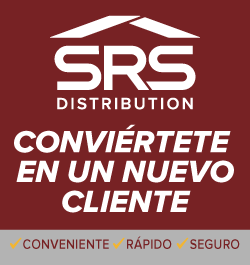





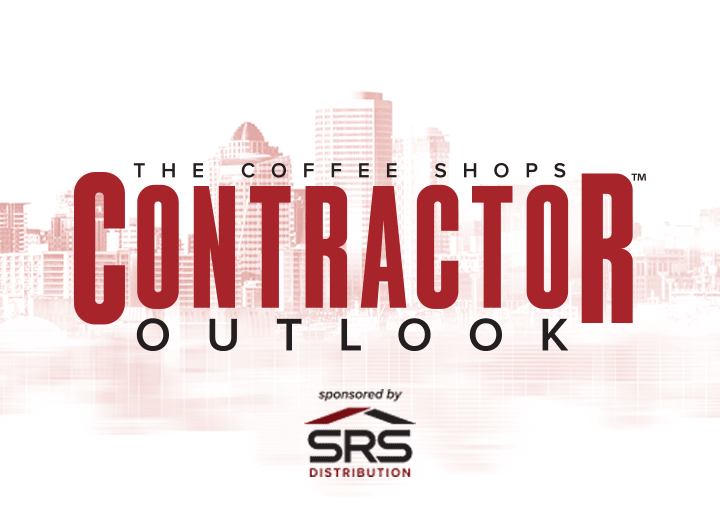
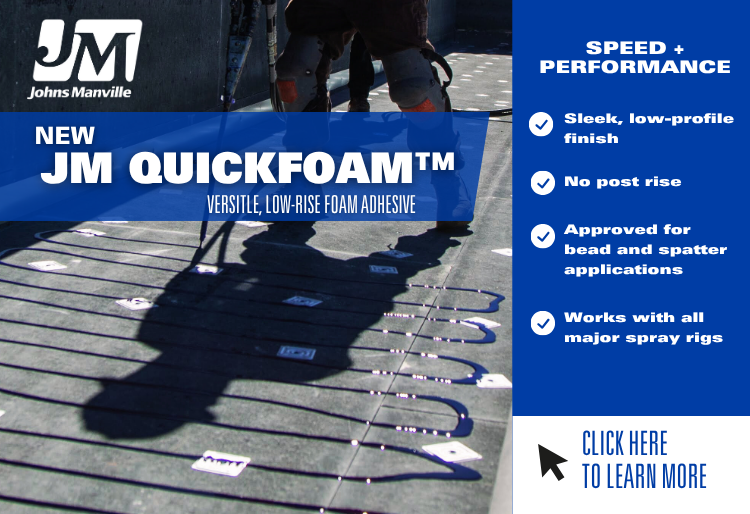
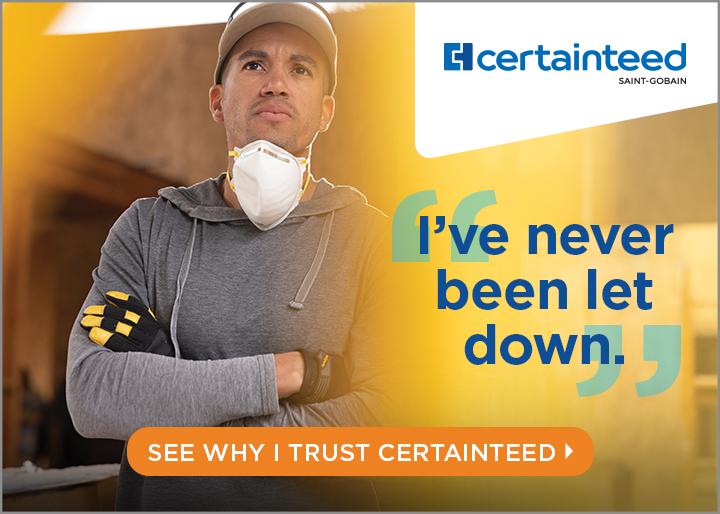

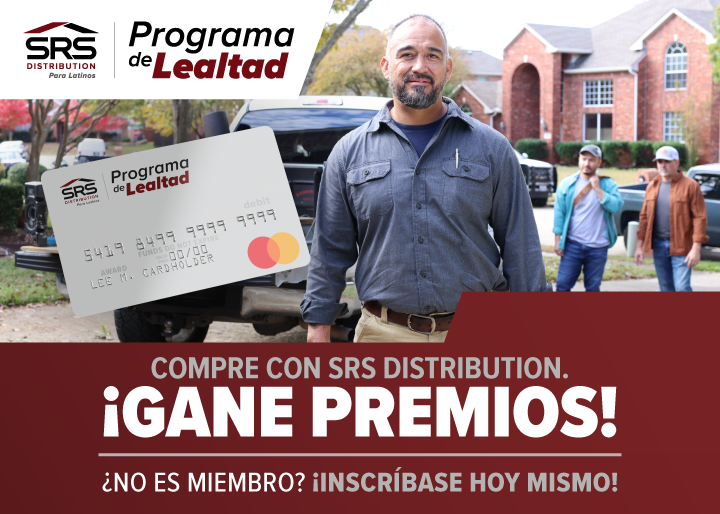
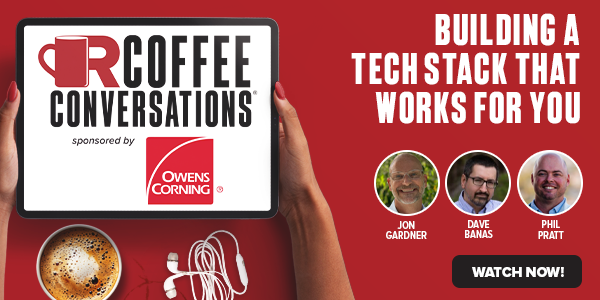
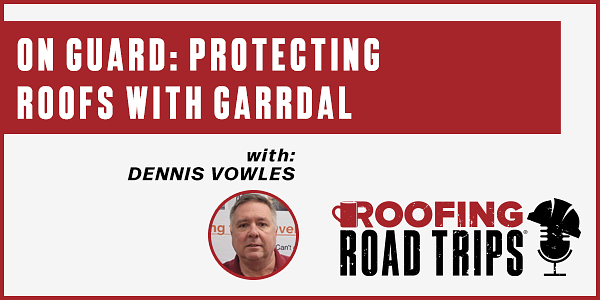
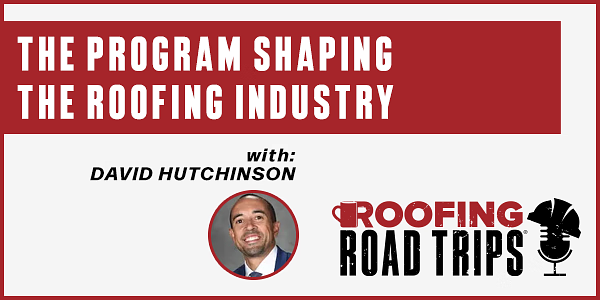
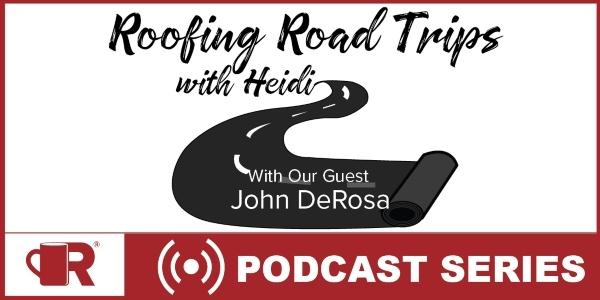

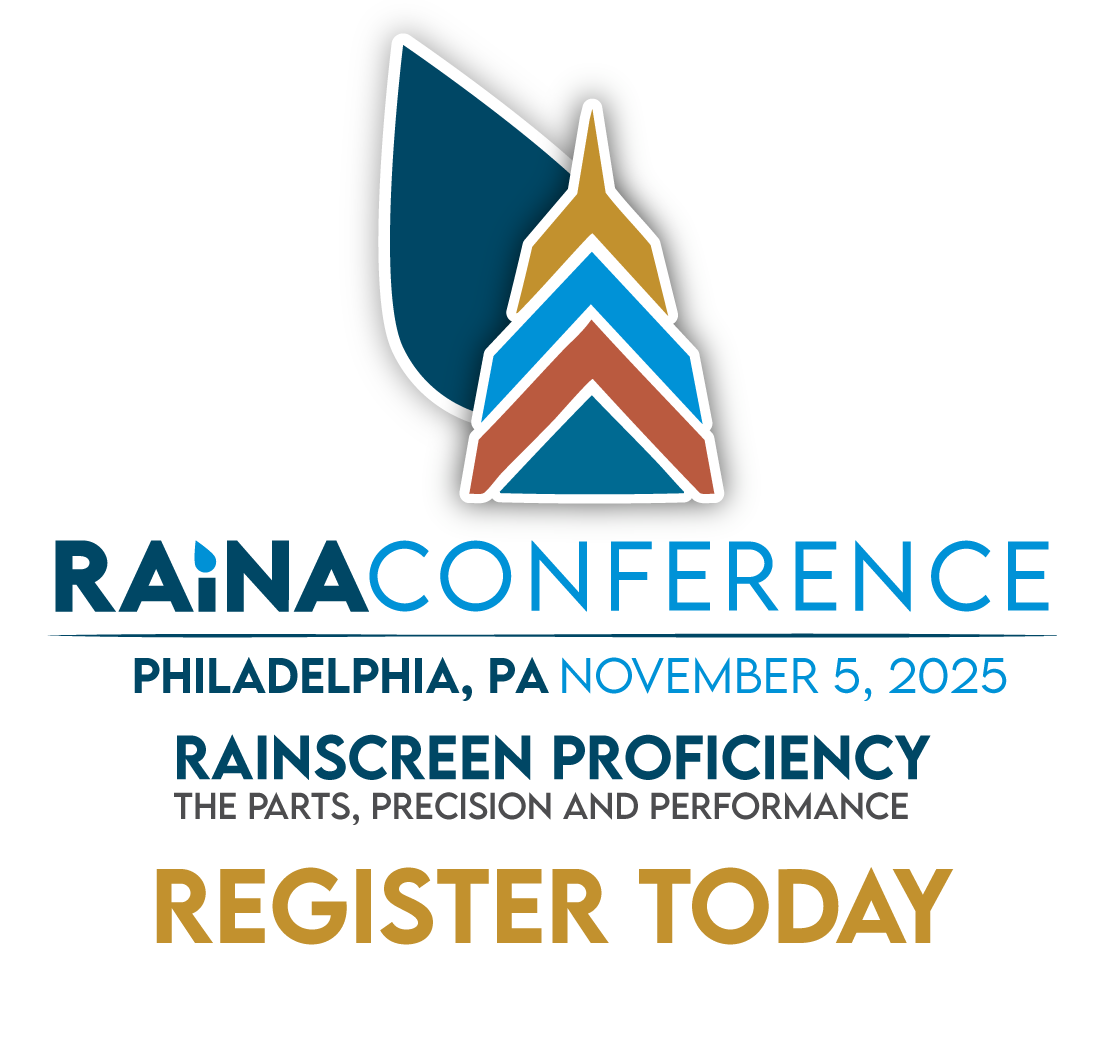



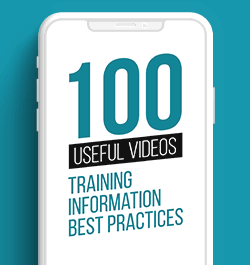
Comments
Leave a Reply
Have an account? Login to leave a comment!
Sign In